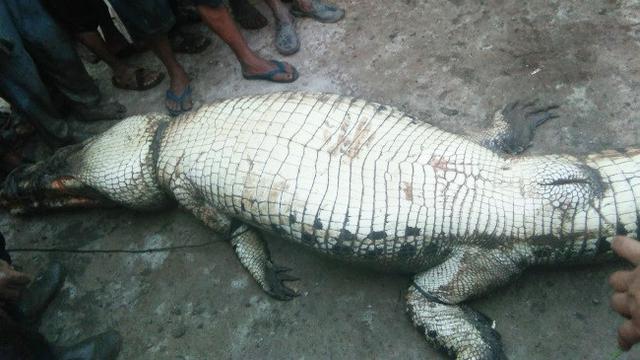Indonesia has seen quite a few gruesome crocodile attacks on humans in recent years. A farmer in the Siak regency of Riau is believed to be the latest casualty after his body parts were found inside a crocodile.
According to reports, a farmer named Wartoyo went missing earlier in the week. Residents began conducting a search along Lakar River, where he was last seen, on Tuesday evening. But searchers came to a grim conclusion when they discovered body parts, suspected to be Wartoyo’s, strewn on the edge of the river.
Their suspicion that a crocodile had mauled Wartoyo was all but confirmed when they spotted one of the predators lying next to some of the farmer’s remains. The residents caught the crocodile and killed it to prove their theory.
“Inside the crocodile’s stomach were body parts of the victim, they were destroyed,” district head Wahyudi told reporters yesterday, as quoted by Liputan 6.
Wahyudi said that the river is filled with crocodiles, but attacks on humans are extremely rare.
Searching for an explanation why the crocodile attacked Wardoyo, Wahyudi offered a rather superstitious theory.
“Maybe, there were taboos that were violated [by residents here],” he said, implying that the crocodile attack could be a punishment for residents straying from time-honored traditions and cultural values in the area.
Wahyudi urged locals to stay away from the river if possible, and to always be respectful and not arrogant if they have to cross the river.
The Indonesian archipelago is home to a vast array of exotic wildlife, including several species of crocodile that regularly attack and kill humans. In January of this year, a 600kg crocodile — illegally kept in captivity — killed a woman who regularly fed her.
Last year, separate crocodile attacks in Indonesia also saw a woman mauled to death in February as well as a man in March. In the case of the latter, the victim was also found dead with his limbs torn apart.
In April 2016, a Russian tourist was killed by a crocodile in the Raja Ampat islands, a popular diving site in the east of the archipelago.




